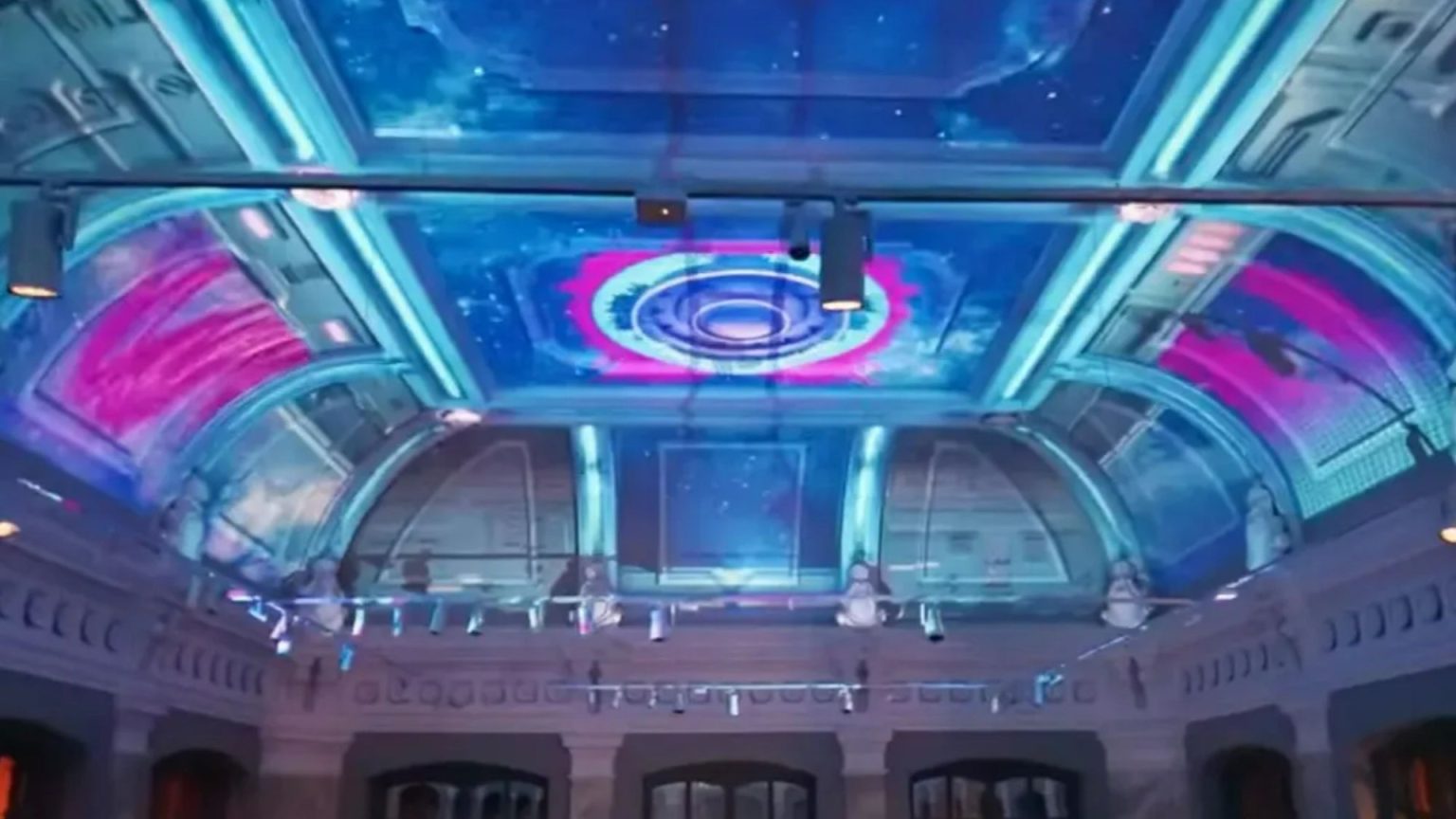Nestled within the bustling heart of Budapest’s Nyugati Railway Station lies a McDonald’s unlike any other. This isn’t your typical fast-food joint; it’s a striking blend of architectural grandeur and modern entertainment, a testament to the ability to elevate even the most commonplace settings. Housed within a structure of historical significance, the restaurant boasts soaring glass windows, ornate copper light fixtures, and an overall aesthetic that speaks to a bygone era of elegance. Recently reopened after an extensive eight-month renovation, this McDonald’s has been transformed into a unique hybrid, serving up Big Macs alongside pulsating beats and mesmerizing light displays.
The transformation takes place every Friday and Saturday night, as the restaurant transitions from a daytime eatery to a vibrant nocturnal hub. From 10 pm to 4 am, live DJs take over, filling the space with music while captivating light paintings dance across the high ceilings. The projections, ranging from ethereal underwater scenes to cosmic journeys through space, create a dynamic backdrop for diners enjoying their late-night meals. Imagine savoring a Big Mac while being immersed in a visual symphony of swimming fish or swirling nebulae – it’s an experience that transcends the typical fast-food encounter. Originally slated to run only until the end of 2024, the “Nyugati Lounge,” as it’s been dubbed, has proven so popular that it will now continue throughout 2025, offering an ongoing blend of culinary satisfaction and visual entertainment.
The Nyugati Railway Station McDonald’s boasts a long history, having first opened its doors in 1990. The recent redesign, however, has not only preserved the historical elements but also incorporated modern amenities. Touchscreen kiosks, now a familiar sight in many McDonald’s locations, offer a streamlined ordering experience, while a unique conveyor belt system between the two kitchen levels provides a fascinating glimpse into the food preparation process. For those seeking a more leisurely experience, the McCafe features a new outdoor terrace at the entrance level, providing a pleasant space to enjoy a coffee and take in the bustling atmosphere of the station. Even the menu offers a touch of local flair, with unique options like the Goosey Gustav burger, topped with foie gras, showcasing a culinary twist that sets this McDonald’s apart.
The architectural significance of this McDonald’s is undeniable. Housed within a structure designed by August de Serres, the Austrian architect who later contributed to the construction of the iconic Eiffel Tower, the restaurant carries a sense of history and grandeur. Zsolt Égi, managing director of Progress Étteremhárosl Kft, the operator of McDonald’s restaurants in Hungary, describes it as one of their “most impressive restaurants,” emphasizing the commitment to preserving the architectural heritage during the renovation. The use of natural building materials and unique design elements further underscores the dedication to creating a space that is both visually appealing and functional.
This Budapest McDonald’s isn’t the only example of the fast-food giant embracing architectural beauty and unique locations. Across Europe, several other McDonald’s restaurants stand out for their aesthetic charm. In Porto, Portugal, a McDonald’s occupies a former historic coffee shop, retaining its palatial ambiance with ornate ceilings, chandeliers, and marble floors. Madrid, Spain, boasts the first-ever Spanish McDonald’s, housed in a grand cream-colored building that was once a jewelry shop, complete with a winding staircase and elegant fixtures. Even in Kristiansand, Norway, a former bank has been transformed into a McDonald’s, with the iconic golden arches positioned above the original grand columns, creating an intriguing juxtaposition of old and new.
The Nyugati Railway Station McDonald’s stands as a testament to the potential for transforming everyday spaces into extraordinary experiences. It’s a place where architectural beauty meets modern convenience, where history and contemporary culture intertwine, and where a late-night craving for a Big Mac can be accompanied by a visual feast of light and sound. This remarkable McDonald’s is more than just a place to grab a quick bite; it’s a destination in its own right, a testament to the unexpected beauty that can be found in the most unlikely of places. It’s a reminder that even a global fast-food chain can embrace and enhance the historical and architectural fabric of a city, creating spaces that are both functional and visually stunning.




